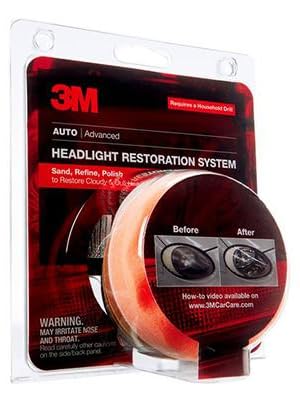Customer Services
Copyright © 2025 Desertcart Holdings Limited
Desert Online General Trading LLC
Dubai, United Arab Emirates










💡 See and be seen: Restore brilliance, drive with confidence!
The 3M Headlight Lens Restoration System (model 39008) is a comprehensive kit featuring drill-activated sanding discs and a rubbing compound designed to remove heavy yellowing and restore headlight clarity. This easy-to-use system improves nighttime visibility and vehicle appearance, making your headlights look like new with professional-grade results.



| Material | Plastic |
| Grit Material | Aluminum Oxide |
| Item dimensions L x W x H | 6.14 x 4.51 x 0.84 inches |
| Brand | 3M |
| Grit Type | Medium |
| Item Weight | 0.29 Pounds |
| Grit Number | 500 |
| UPC | 051131390089 |
| Number of Items | 1 |
| Global Trade Identification Number | 00051131390089 |
| Manufacturer | 3M |
| Model | 3M HEADLIGHT RESTORATION SYSTEM |
| Item Weight | 4.6 ounces |
| Product Dimensions | 6.14 x 4.51 x 0.84 inches |
| Item model number | 39008 |
| Is Discontinued By Manufacturer | No |
| Exterior | Machined |
| Manufacturer Part Number | 39008 |
| Special Features | Not_Performance_Used |
| Mirror Lighting Type | automotive-exterior-headlight-bulbs |
Trustpilot
1 month ago
4 days ago